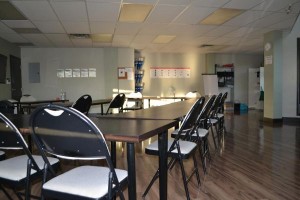Tsunamis are described as a series of large ocean waves that extends inland. They are frequently caused by severe earthquakes under the ocean floor or landslides into the ocean. A tsunami can occur within minutes after a major earthquake, wherein the danger period may last for several hours after the earthquake has occurred. The waves may rise to a few feet, and in some cases, tens of feet, when they enter shallow water. Tsunamis may occur at any time of the year, at any time of the day, often catching people off guard. It can cause flooding and may lift giant boulders, demolish houses and flip vehicles. The most devastating tsunami recorded on history was the 2004 Indian Ocean tsunami which killed more than 200,000 people from several Southeast Asian nations. Moreover, the Pacific is considered the most active tsunami zone in the world. Tsunamis are also called tidal waves, although this name is a misnomer.
Causes of Tsunamis
Tsunamis are of natural causes. This means that humans cannot do anything to cause, and in turn, prevent a tsunami from occurring as only nature can dictate when a tsunami can occur.
- Underwater earthquake
- Landslide into the ocean
- Volcanic eruption in the ocean
- Meteor impact
Warning Signs of Tsunamis
Tsunamis may strike shoreline with very little or no warning. Most people do not often notice warning signs thus they are left dumbfounded when a tsunami strikes. The following may be warning signs one can lookout for, especially for those living in coastal areas.
- A strong earthquake that lasts for more than 20 seconds, especially those that occur near the coast
- An observable quick recession (rise and fall) of water levels that is lower than the expected low tide, which usually occurs minutes before the shoreline is struck by the tsunami
- Abnormally large waves that may not be very tall in height but may continuously increase in size
- Change in animal behavior, such as seeking human shelter, grouping together, or running away from the shore
- Loud ocean roar
How to Survive Tsunamis
The following cannot guarantee any one individual that he/ she can be saved in cases of tsunamis but these tips can help likelihood of survival.
- When any of the warning signs mentioned above are observed, immediately move inland and to higher ground. If this is not possible, climb high, preferably a high and sturdy building. One may also opt to climb a tall and strong tree but should be done only as a last resort if there is no nearby building that one can enter.
- If an individual becomes caught up in water, find a floating object to use as a raft to keep self above water.
- If persons of authority give order to evacuate or move to higher ground, evacuate immediately.
- Always keep an emergency survival kit with complete supplies prepared for all kinds of natural disasters. Ensure that supplies are enough to last 72 hours for the whole family.
- Wait for reliable information from the radio on updates.

Tsunamis are series of waves that extend inland. It may be difficult to watch out for warning signs but one should always be prepared for tsunamis, especially those who live by the coastline.
Online Sources:
http://www.redcross.org/prepare/disaster/tsunami
http://www.getprepared.gc.ca/cnt/hzd/tsnms-bfr-eng.aspx
http://www.sms-tsunami-warning.com/pages/tsunami-warning-signs#.U04XK_mSybM
http://news.nationalgeographic.com/news/2007/04/070402-tsunami_2.html